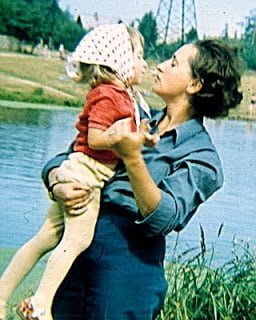“Every time I’m on a phone call, it seems like my child urgently needs my attention,” It is hard!! “I can’t even spare 5 minutes to respond to an emergency email; my toddler demands my constant presence throughout the day.”
In an ideal world, children should be able to play independently, shouldn’t they? However, reality often differs, and presently, it appears that our child requires our presence precisely when we long for a moment of solitude.
The initial strategy involves setting aside designated time when you can wholeheartedly focus on your child. You can start a new routine by saying, “I’m dedicating 15 minutes to watching you play,” and demonstrate your full commitment. Over time, this routine will establish a sense of anticipation and excitement for your child. Imagine that you are refilling their attention bucket.
Now, you might be wondering: What about those instances when an essential phone call must be done, and your 2 to 5-year-old isn’t exactly thrilled about it?
Here’s an additional idea to encourage brief periods of independent play: create a “Mommy Is Busy” box. While this box can never replace your bonding time, it can facilitate a smoother transition to independent play when needed.
The “Mommy Is Busy” Box
- Locate two rectangular 16 qt. boxes (optimal choices can be found at any school/paper supply store).
- Assemble Box #1 Reflect on your child’s interests and gather a selection of items accordingly. Place these items in this box, which should remain in the adult’s possession, out of your child’s reach and sight. The key is choosing items not utilized on a daily basis. These need not necessarily be brand-new store-bought items; they can be sourced from your kitchen. Over time, keep enriching this box with additional items—it serves as your reservoir. (A list of ideas for this box will be shared later on).
- Construct Box #2 This box will be the one you make accessible to your child during your phone calls. Attach a label: “Mommy Is Busy” (featuring a depiction of a busy mom, engrossed in an activity such as talking on the phone). You can also customize the label to read “Daddy Is Busy,” “Grandma Is Busy,” etc. Affix this label securely onto the lid.
- Introduce Box #2 to Your Child
- Transfer one set of items/toys from box #1 to box #2. Keep box #1 stored beyond your child’s reach.
- Be transparent about the box’s purpose. “I understand how challenging it can be to wait while I chat with Aunt Susie. That’s why I’ve prepared this box just for you. Would you like to explore what’s inside while I converse with Susie?”
- Present Box #2 to your child.
- For the initial experience, consider a “pretend session” lasting 2 to 5 minutes. Gradually, you can extend this timeframe.
- Pay attention to your child’s engagement level to determine when to swap items from Box #1 to Box #2.
- Ensure that the box isn’t accessible to your child throughout the day. The aim is to keep the contents novel and captivating.
- When you conclude your task and notice your child is still engrossed in the box’s contents, respect their interest and allow them to finish before stowing away the box.
By thoughtfully implementing these strategies, you can create pockets of independent playtime for your child, allowing you the moments you need to attend to your responsibilities.
Few Ideas for Box Contents
| 2 + years old | 4 + years old |
| Expand this idea by cutting three lids in different ways: long and skinny, small and round, and large and round. Provide small items to sort. Could be small sticks, rocks, and cards. (recycled) | Empty toilet paper rolls with small animals in them on one string. Hang across the room. And small rescue figure. Can he save animals? (recycled-free) |
| Set of empty containers from lotions with Lids for children to open and close (recycled item) | Expand on this set of empty containers from lotions and perfumes. You can have multiple sizes, small to large, you can put items inside for sorting. Lids can be removed and kids can match the lid to the jar. (recycled items) |
| An empty coffee can from Trader Joe’s. Cut the lid. It makes a perfect sorter. Cut one opening for items to sort in the box. (recycled) | Expand this idea by cutting three lids in a different ways: long and skinny, small and round, and large and round. Provide small items to sort. Could be small sticks, rocks, and cards. (recycled-free) |
| Set of small plastic cars | Set of small metal cars (you might have one already) |
| Duplo Set | Lego Set |
| Pretend old phones (recycled) | Bolts and screws |
| Kefir bottle from Trader Joe’s with plastic bracelets and plastic curlers | Markers and paper that are usually not available |
| Stacking cups | An empty coffee can from Trader Joe’s. Cut the lid (long skinny opening). It makes a perfect mailbox. Provide small pretend letters. Include a letter from you to your child, from dad to child. (recycled-free) |
| Egg carton with Practice Plastic Golf Balls | Set of locks and keys |
The “busy box” not only occupies your child during your busy moments but it also fosters the independence we strive to model in our children. It reminds me of when we go with older children to the library to borrow books and materials.
My goal is to provide resources for parents to handle phone calls, emails, and urgent matters while ensuring that we don’t misuse this idea to replace genuine connections with our children. Spending quality time with your child, where you’re present, observant, and allow them to lead the play, remains essential for your relationship and child development.
Wishing you all the best in this challenging yet rewarding parenting journey!
Warmly,
Teacher Kira







